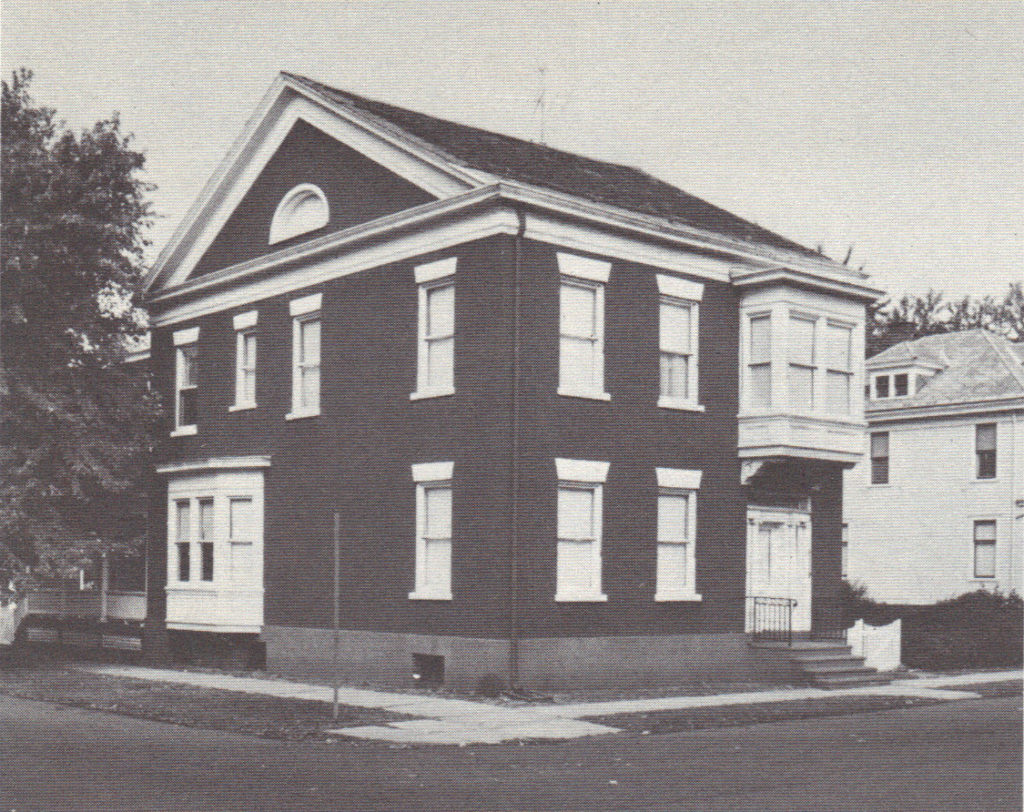Elm Place
The home of agriculturalist Alexander Walsh (1783-1849).

Waite, John G. The Architecture of Lansingburgh, New York. Lansingburgh, NY: Lansingburgh Historical Society, 1976. 44.
LINES,
Lines inscribed to ALEX’R WALSH, Esq., on reading his “Agricultural Thermometer” which lately appeared in your paper, written after the manner of Swift.
When Flora searched the world around
For beauty, love, and grace,
At length a charming spot she found,
And called it Elm Place.* […]
WILLIAM ARTHUR.
Feb. 22d, 1848.
—
* The residence of A. W. Lansingburgh.
Lansingburgh Democrat. May 4, 1848: 1 col 4. [Written by the father of Chester A. Arthur]
☞ The following list comprises the Botanical names, of plants in Mr. Alexander Walsh’s Garden in this village
1, Ferraris tigrida; 2, Mutabilis; 3, Yucca gloriossa; 4, Yucca filamentosa; 5, Agaricus compestris; 6, Mimosa pigra; 7, Dictamus rabra; 8, Tamarindus occidentalis; 9, Hellianthus annuus v. pleno; 10, Broussonetia papyrifera; 11, Multicaulis; 12, Glycine coniosa, of Wildenow and Pursh. It is a great error to treat it as a variety of monoccia, as its pubescence is different, and the root perennial and tuberous. Nuttail and others adapt Amphicarpa as the generic name. It grows wild from Canada to Virginia, but is greatly improved by cultivation, particularly the root. 13, Lathyrus latifulius; 14, Clematis flanimula; 15, Linum, pereund of Linneus. Pursh and Nuttail found the same specius growing easterly to Fort Mondou. 16, Convolvulas jalapa; 17, Rheum undulatum; 18, Calcycanthus; 19, Anthemis nobilis; 20, Slanum melongena; 21, Crambo maritima; 22, Cynara scolmus; 23, Cymara scolymus; 24, Aralia spinosa; 25, Fagusa cuprea; 26, Betula sendula; 27, Colutea arborescens; 28, Sorbus aucupuna; 29, Symphoria; 30, Sorbus americana; 31, Connus sericca; 32, Euonymus curophena; 33, Ligustrum vulgare; 34, Castanca vesca; 35, Ptela trifoliata; 36, Hedere hibernica; 37, Acer striatum; 38, Salix annularis; 39, Juglans olivacformis; 40, Populus alba; 41, Selix nigra; 42, Taxus hibernica; 43, Salix lucida; 44, Prunus spinosa; 45, Salix cupraea; 46, Fraxinus pendula; 47, Rhus continus; 48, Sorbus domestica; 49, Kolrenteria paniculata; 50, Alianthus glandulosus; 51, Aesculus monostachya; 52, Acacia julibriasm; 53, Agaricus campestria; 54, Mesembryanthemum glabrum; 55, Mesembryanthemum crystallinum.
Lansingburgh Democrat. January 4, 1849: 1 col 6.
☞ Notwithstanding the decease of its original proprietor, Walsh’s garden still blooms in all the luxuriance and beauty for which it has been so long-celebrated: The lovers of the rural art, can there find many rare and exotic plants, emitting their rich fragrance, and exhibiting all the most delicate tints of the rainbow. The past season has been highly favorable for the full perfection of Flora’s kingdom, and in no place can a more attractive exhibition of the labors of the fair goddess be found, than at Elm place, in this village.
“Local Summary.” Lansingburgh Democrat. July 18, 1850: 2 col 3.
Walsh was especially famous for his extensive gardens which lay to the north of “Elm Place”, his commodious house on the corner of John (4th Avenue) and Elizabeth 116th (Streets).
Broderick, Warren. “Walsh Was Noted Horticulturalist.” Times Record. May 8, 1971: B20.